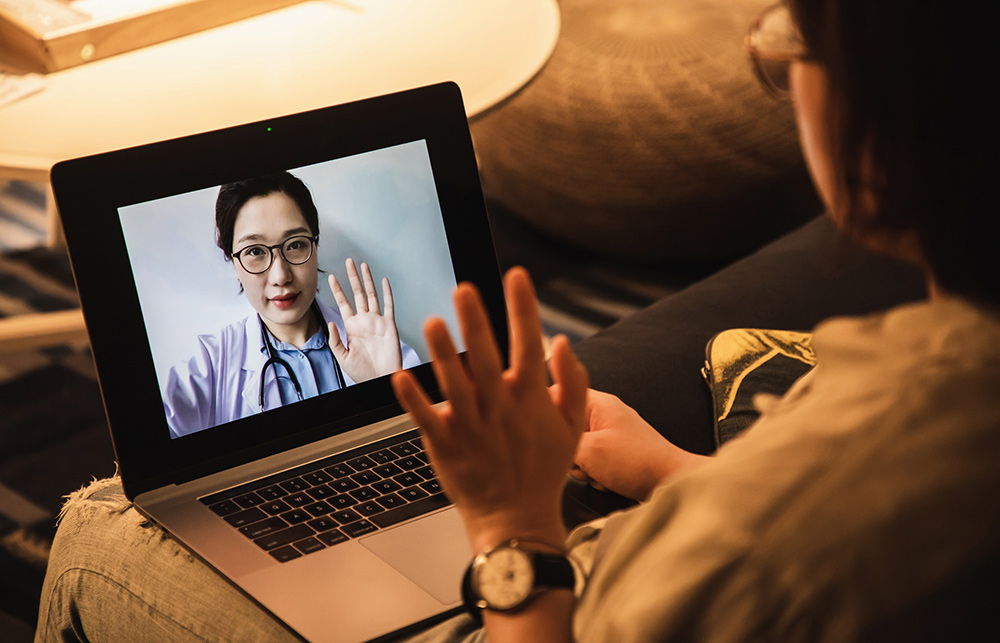美国医疗专家:远程医疗迎来黄金发展期,且“势不可挡”

6月3日,来自多个领域的医疗专家参加了《财富》健康头脑风暴大会(Brainstorm Health)的启动电话会议。今年的大会将采取虚拟活动的形式,于7月7日和8日召开。
纽约长老会医院(New York Presbyterian)院长兼CEO斯蒂文•科温医生、Verily Life Sciences医疗平台总裁维维安•李医生、Komodo Health公司CEO兼联合创始人阿里夫•纳索医生等业内精英畅所欲言,就新冠疫情在美国医疗体系中产生的连锁反应发表了各自的见解。
参会嘉宾达成了什么明确的共识?在疫情期间,远程医疗使用量飙升,这种趋势可能会延续下去。
如此大规模的疫情,自然令医院容量面临压力,心脏病和糖尿病等慢性病患者可能不愿意到医院就诊,以免让自己面临风险。维维安•李表示,在这种情况下,远程医疗、虚拟就诊和其他数字医疗技术发挥了关键作用。
她说:“能通过虚拟方式看医生是很了不起的。”但更重要的是,数字糖尿病护理平台等技术的发展,“让人们可以用更好的方式进行自我护理。”
维维安•李认为,这些平台最初发展缓慢,部分原因是它们没有得到应得的资金支持。但现在,联邦医疗保险等大型医疗计划都开始将持续血糖监测和数字糖尿病患者辅导等技术纳入报销范围。这些技术能够实时通知患者哪些行为会影响血糖水平。
美国部分最知名的医疗系统对远程医疗的需求大幅增加。比如纽约长老会医院院长科温表示,在疫情爆发之前,约4%的门诊为远程医疗就诊。他说:“疫情期间,85%的门诊为远程医疗就诊,现在95%的精神病科门诊采取远程医疗的形式。医生基本上都采取了这种技术。”
新的数字医疗模式也被应用到了新冠肺炎的治疗当中。例如,科温表示,不需要住院治疗的新冠肺炎患者,目前都在家接受远程监控。
疫情导致的长期变化将让这种趋势延续下去。“候诊室里不会再有30个人在候诊,电梯里也不会站满15个人。这些巨大的变化再也不可能回到从前。”
虽然疫情带来了机会,但挑战依旧存在。例如,如果本来就缺医少药的偏远地区改为采用远程医疗,就必须建设宽带基础设施,以支持虚拟就诊。
但科温和多位参会嘉宾都相信数字医疗的发展“已经势不可挡”。
译者:Biz
6月3日,来自多个领域的医疗专家参加了《财富》健康头脑风暴大会(Brainstorm Health)的启动电话会议。今年的大会将采取虚拟活动的形式,于7月7日和8日召开。
纽约长老会医院(New York Presbyterian)院长兼CEO斯蒂文•科温医生、Verily Life Sciences医疗平台总裁维维安•李医生、Komodo Health公司CEO兼联合创始人阿里夫•纳索医生等业内精英畅所欲言,就新冠疫情在美国医疗体系中产生的连锁反应发表了各自的见解。
参会嘉宾达成了什么明确的共识?在疫情期间,远程医疗使用量飙升,这种趋势可能会延续下去。
如此大规模的疫情,自然令医院容量面临压力,心脏病和糖尿病等慢性病患者可能不愿意到医院就诊,以免让自己面临风险。维维安•李表示,在这种情况下,远程医疗、虚拟就诊和其他数字医疗技术发挥了关键作用。
她说:“能通过虚拟方式看医生是很了不起的。”但更重要的是,数字糖尿病护理平台等技术的发展,“让人们可以用更好的方式进行自我护理。”
维维安•李认为,这些平台最初发展缓慢,部分原因是它们没有得到应得的资金支持。但现在,联邦医疗保险等大型医疗计划都开始将持续血糖监测和数字糖尿病患者辅导等技术纳入报销范围。这些技术能够实时通知患者哪些行为会影响血糖水平。
美国部分最知名的医疗系统对远程医疗的需求大幅增加。比如纽约长老会医院院长科温表示,在疫情爆发之前,约4%的门诊为远程医疗就诊。他说:“疫情期间,85%的门诊为远程医疗就诊,现在95%的精神病科门诊采取远程医疗的形式。医生基本上都采取了这种技术。”
新的数字医疗模式也被应用到了新冠肺炎的治疗当中。例如,科温表示,不需要住院治疗的新冠肺炎患者,目前都在家接受远程监控。
疫情导致的长期变化将让这种趋势延续下去。“候诊室里不会再有30个人在候诊,电梯里也不会站满15个人。这些巨大的变化再也不可能回到从前。”
虽然疫情带来了机会,但挑战依旧存在。例如,如果本来就缺医少药的偏远地区改为采用远程医疗,就必须建设宽带基础设施,以支持虚拟就诊。
但科温和多位参会嘉宾都相信数字医疗的发展“已经势不可挡”。
译者:Biz
A wide-ranging group of health care experts on last Wednesday joined a kickoff call for Fortune's Brainstorm Health conference in the lead up to our virtual event which will be held on July 7 and 8.
The conversation featured thoughts from prominent leaders including New York Presbyterian president and CEO Dr. Steven Corwin, Verily Life Sciences president of health platforms Dr. Vivian Lee, Komodo Health CEO and co-founder Dr. Arif Nathoo, and others on the ripple effects of the coronavirus pandemic across the American health care system.
One are of clear consensus among the participants? Telehealth use has skyrocketed during the outbreak—and the trend is probably here to stay.
A pandemic of this scope naturally strains hospital capacity, and people with chronic conditions such as heart problems and diabetes likely don't want to go into a hospital setting where they put themselves at risk. That's where telemedicine, virtual doctor visits, and other digital health technologies play a critical role, says Lee.
"It's great that you can see doctor virtually," she says—but even more importantly, advances such as digital diabetes care platforms "have enabled people to care for themselves in even better ways."
Those sorts of platforms were initially slow to take off in large part because they weren't reimbursed to the extent they should have been, according to Lee. Now, however, large health programs such as Medicare have begun to cover technologies such as continuous glucose monitors and digital diabetes coaching which can inform patients in real time about which behaviors affect their blood sugar levels.
Demand for telehealth has surged in some of the nation's most prominent health systems. For instance, before the pandemic began, New York Presbyterian's Corwin says that about 4% of outpatient visits were telehealth visits. "During the crisis, it's 85%, and 95% of our outpatient psychiatry visits are now telemedicine," he notes. "Physicians have now basically crossed the rubicon."
That new digital paradigm extends to COVID-19 as well. For instance, says Corwin, patients who have COVID-19 but aren't sick enough to require hospitalization are now being monitored remotely in their own homes.
Long-term changes wrought by the pandemic will only keep the trend going. "You can’t have 30 people in a waiting room or 15 people in an elevator anymore. This has all changed dramatically and there’s no going back on that."
But despite the opportunity, challenges remain. For instance, should rural communities which already have a shortage of hospitals turn to telemedicine, the broadband infrastructure to support virtual visits must be built.
Ultimately, however, Corwin and multiple other participants believe "the horse is out of the barn" on digital health.













